The Great Resignation Is Over
Voluntary turnover slowed sharply in late 2022 as layoffs mounted, particularly in tech. As interest rates rose and financial markets shook, employees began to cling to job security at the highest rate in years.
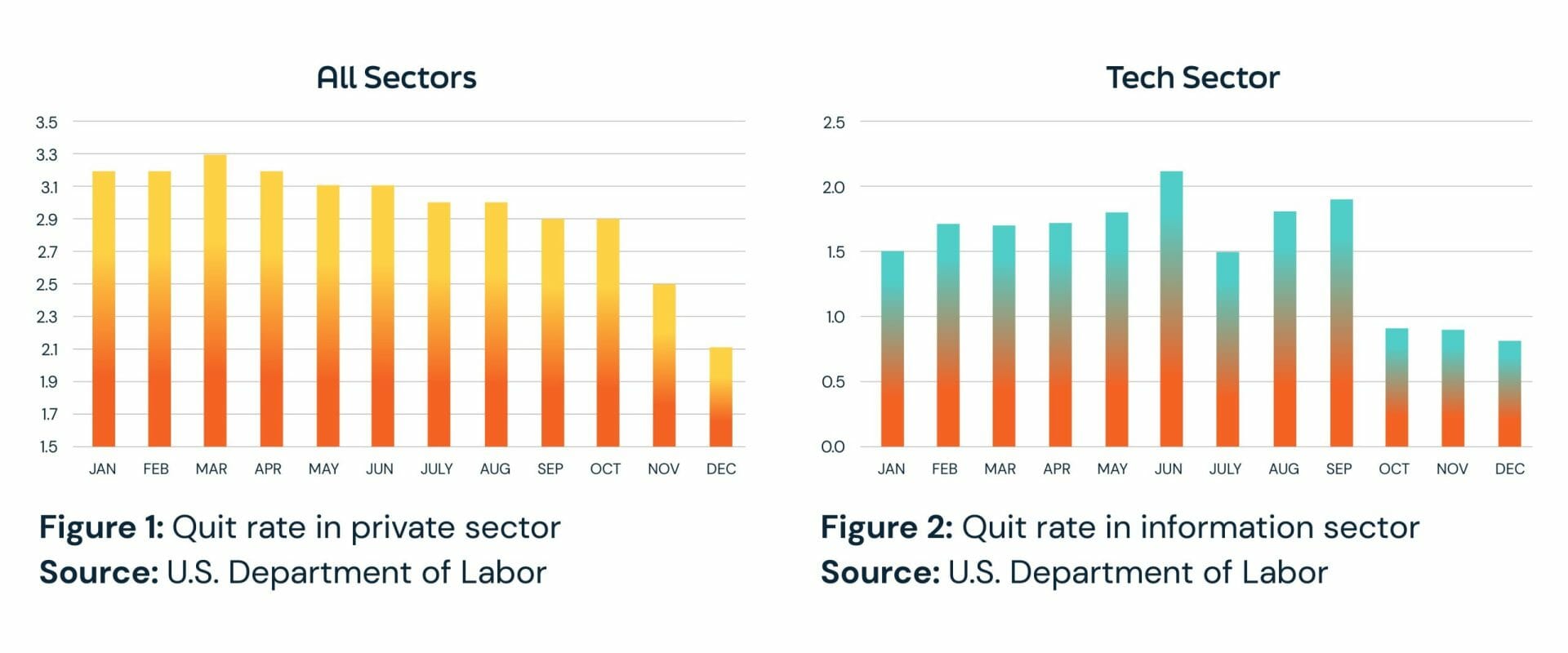
However, Sentiment Remains Low
Anonymous Worker Surveys Show Declining Trends
Pew research shows two negative forces. First, employee engagement declining – dropping nearly 10% since 2020. Second, their data shows the share of employees actively disengaged with work has risen by 50%.
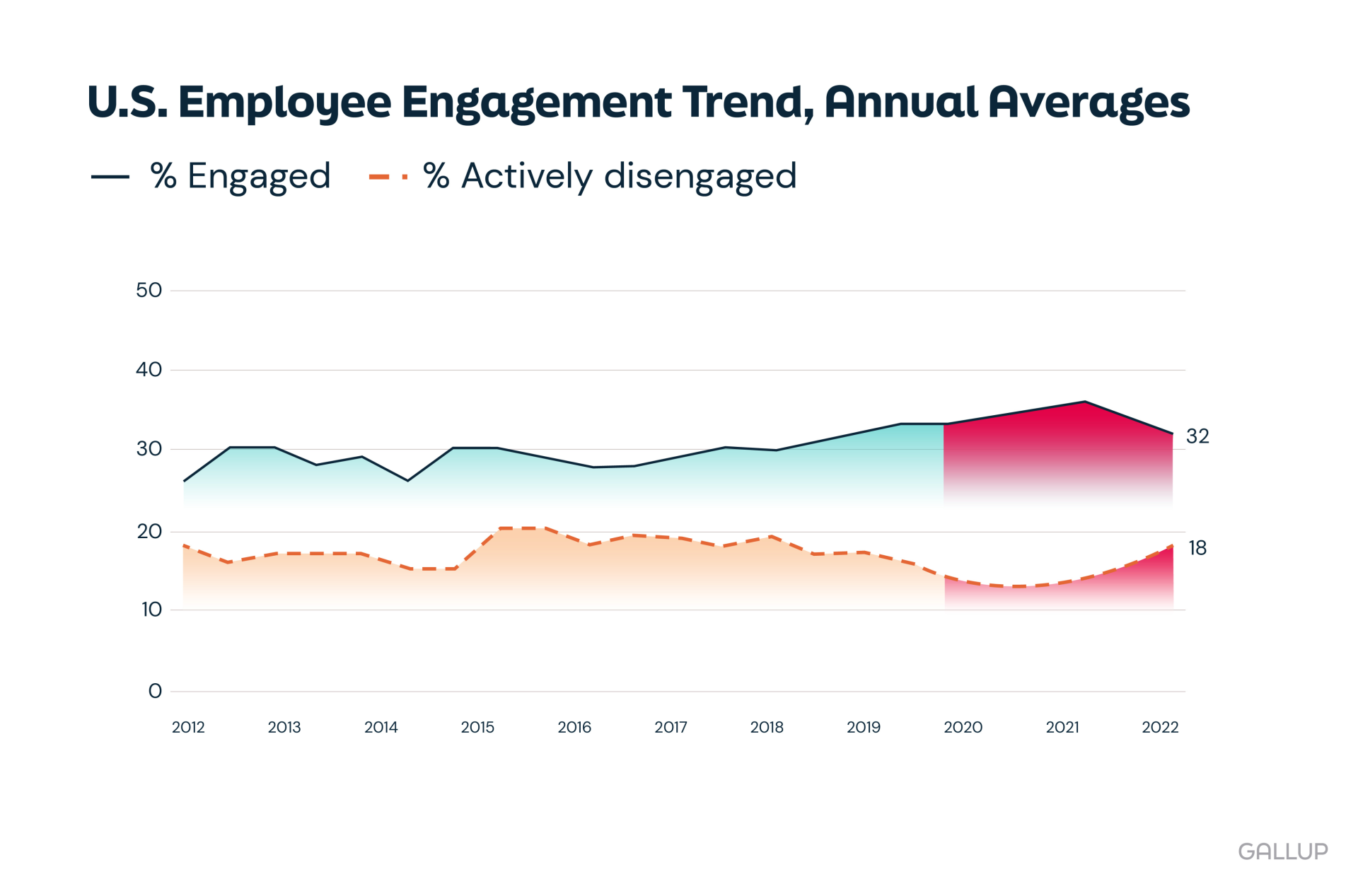
The Current Situation Is Unstable
“The Waters Are Calm” – Your Data Suggests Everything is O.K.
In most companies, the December 2022 employee surveys showed leveling-out. Qualtrics’ 2023 engagement survey of 300,000 workers showed stabilization in engagement – particularly among tech workers.
But Discontent Remains Below the Surface
While the macro-economy is changing survey answers– the decline in quits may belie actual employee attitudes.
The same Qualtrics survey shows a surge in employees’ intent to leave their job. While engagement rose in late 2022, intent to leave rose even faster.
“When my EX survey tells me everything is ok, I simply don’t believe it,” one CHRO told us.
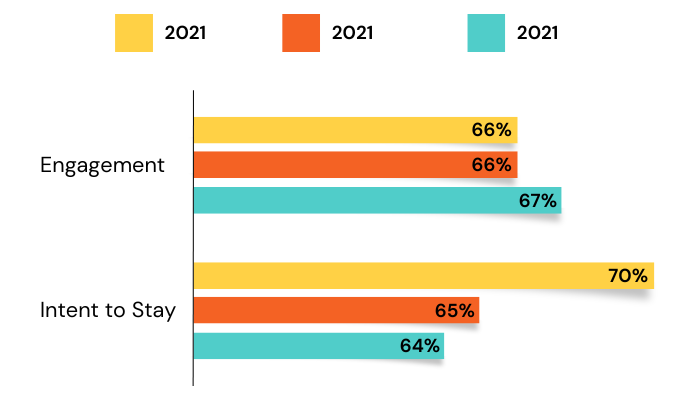
Avoid Another Miscalculation
2022-23 Layoffs Involved Mis-Reading the Data
Layoffs announced at tech companies were often done with CEOs issuing a mea culpa.
From Salesforce’s Marc Benioff to Stripe’s Alex Collison, CEOs who laid-off workers in late 2022 and early 2023 stated they read too much into surging demand. As economies reopened and demand surged, many executives misinterpreted demand data.
Tens of thousands of new workers were hired in 2021 and 2022 – only to be laid off in 2023 as demand reverted to baseline levels.
Could your company be making similar misjudgments when it looks at improving trends in employee experience data?
Adobe CEO Shantanu Narayen recently asked, “Are we looking around the corner adequately?”
Employees Are Hunkering-Down
Two-thirds of Americans believe we are in a recession or will soon be in one. A similar share report fearing job loss. Massive job cuts are happening at both trendy tech startups as well as bellwether companies such as Amazon and Salesforce.
Employees are hunkering down as they sense there are fewer external options than before. It makes more sense to ride it out where they are. It makes less sense to take a risk.
This workplace-as-bunker mentality may be particularly acute in particular sectors – like tech and financial services – that are interest rate sensitive or recession exposed.
“Constrained Rational Commitment” in 1H’23
Uber’s former head of People Analytics, RJ Milnor, said: “It helps to think about the different ways people show commitment to an organization.”
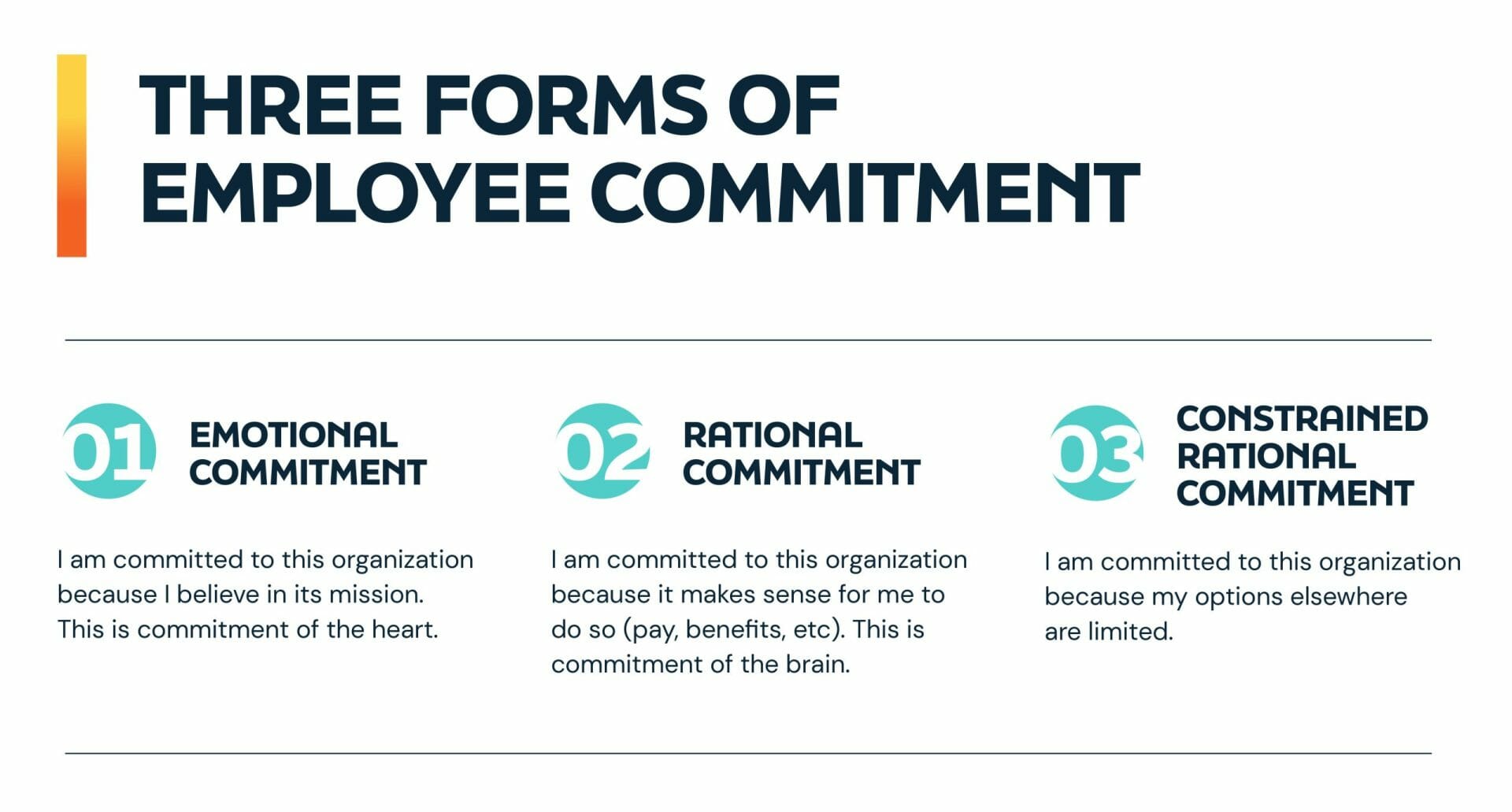
Employees Are Struggling with Fundamental Issues
Workplaces Are Struggling With “Trust”
The world of work was disrupted in 2020. While offices have reopened and new operating cadences are established, peoples’ attitudes towards the shift are unstable.
The Microsoft Work Trend Index showed 87% of employees report that they are productive at work, and productivity signals (as measured by activity in Microsoft applications) continue to climb. At the same time, 85% of leaders say that the shift to hybrid work has made it challenging to have confidence that employees are being productive.
Microsoft describes the phenomenon as “Productivity Paranoia”. It shows there is a fundamentally different perspective on the same activity. Workers’ perception that bosses regard them as less than fully productive is leading to a decline in trust.
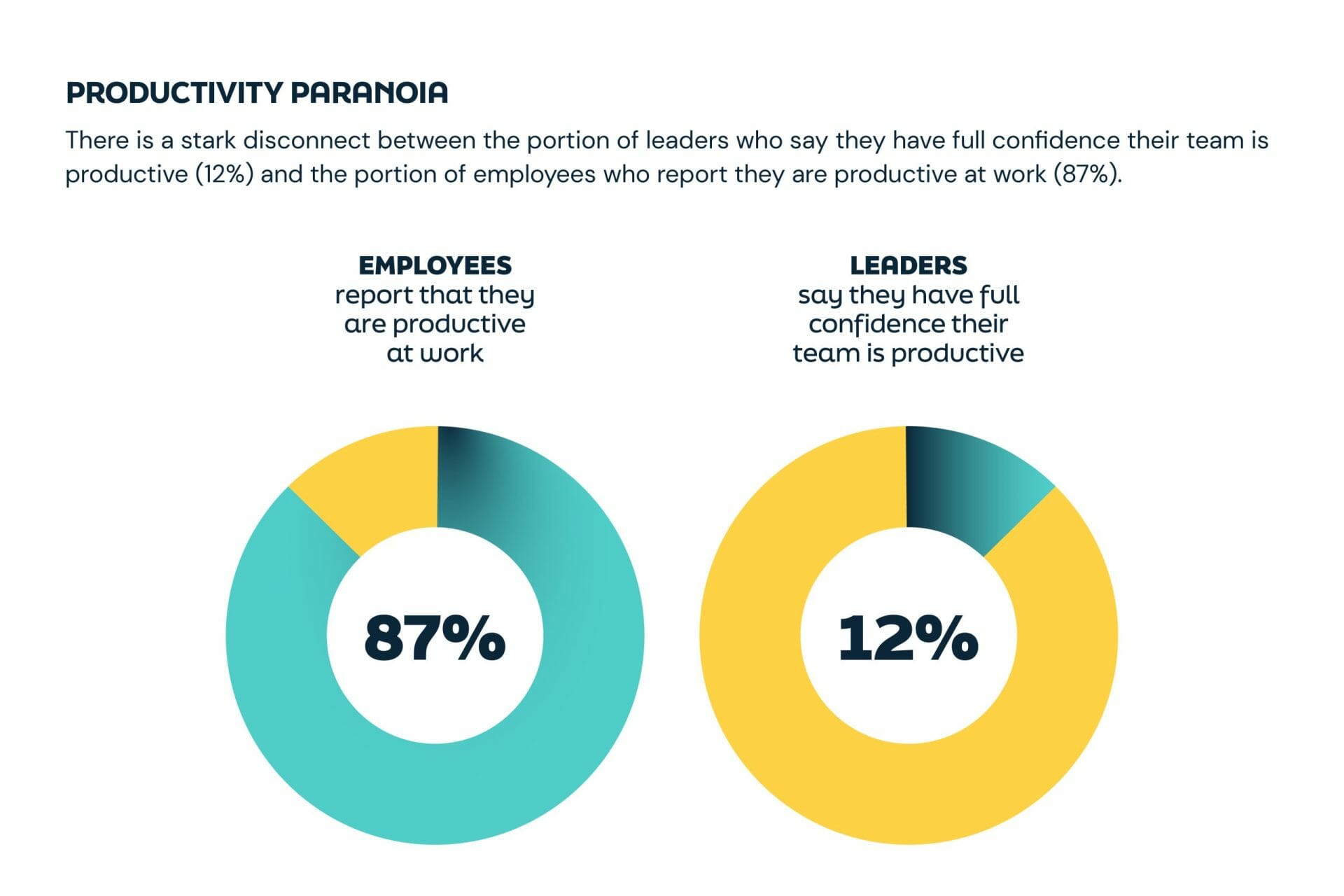
Workplaces Are Struggling with “Connection”
The Gallup Global Workplace Report found 79% of workers feel distant from their teams. The level of distance is not a pandemic-related phenomenon – the survey shows a lack of workplace connection has been in effect for several years.
Workplaces Are Characterized by More Anxiety and Stress
So what’s different? Employees are reporting higher levels of stress, anxiety, and concern in nearly every survey.
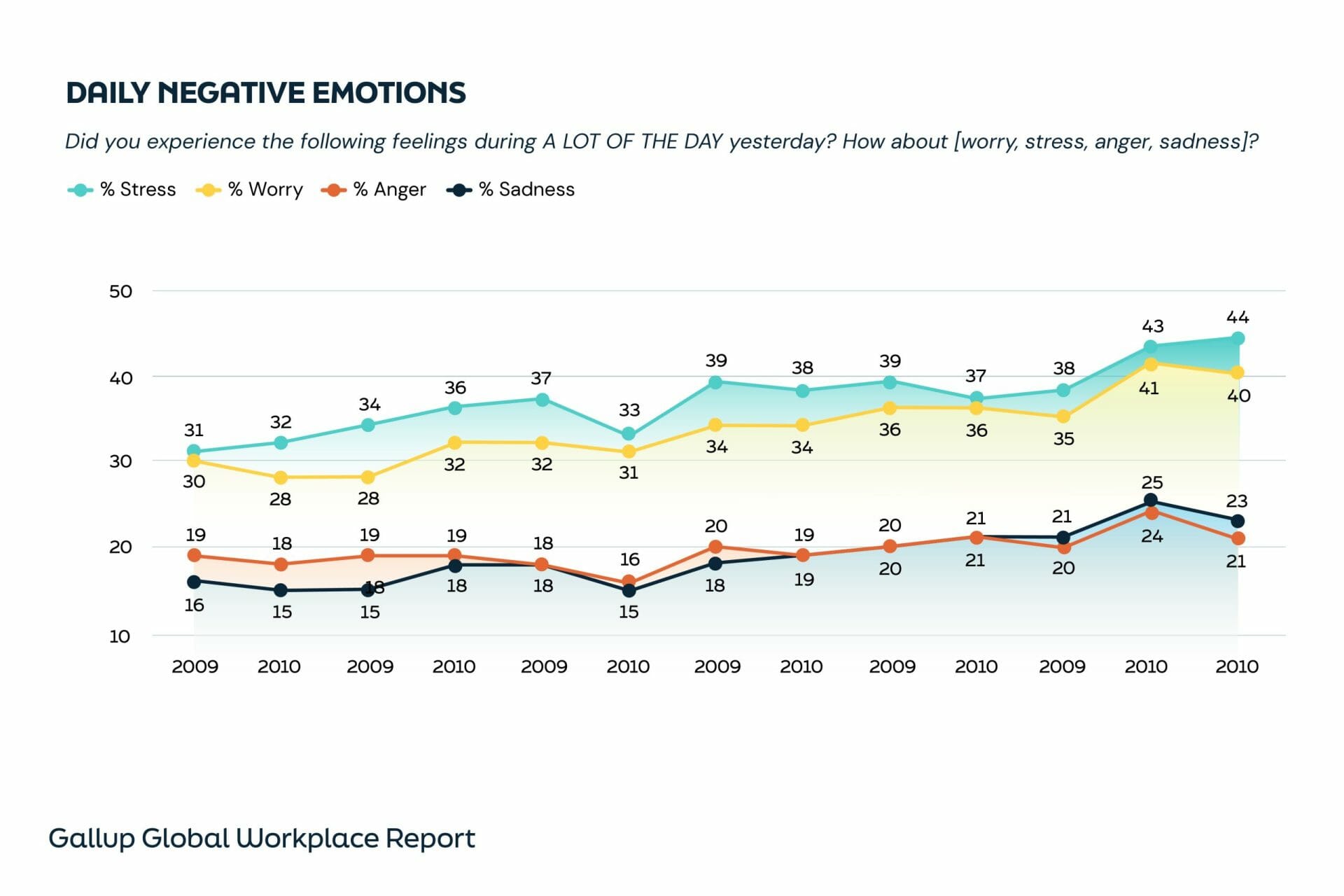
An Important Time to Be Productive
Productivity Has Not Risen Materially
According to the Bureau of Labor Statistics, growth in productivity since the pandemic hit now stands at about 1 percent annually, in line with the meager rate since 2010 — and far below the last stretch of robust improvement, from 1996 to 2004, when productivity grew more than 3 percent a year.
CEOs Are Pledging Productivity Increases in 2023
Investors have ratcheted-up pressure on CEOs to show productivity gains. In January 2023, Morgan Stanley recited the productivity lift expected from firms that either pledged to shed employees or change work practices to boost near-term cash flows.
Period Calling for “Rethinking”, Not Just “Scaling-Up”
Companies achieved growth in recent years by aggressively hiring – adding bodies to pursue lift in revenues. As the cost of capital has returned to baseline levels, many growth strategies need to be rethought.
“Scaling-up” operations is no longer the vaunted imperative that it was in 2015-2022.
It’s the Wrong Time to Think ‘Capital vs. Labor’ and ‘Management vs. Employees’
As companies need to identify productive ways forward and do more with less, it’s a vital time for workplaces to become more trusting and connected.
Industry thought leader Josh Bersin said, “For growth to work, everyone needs to be in it together.”
A Bad Time to Be Out of Touch
Despite Challenging Climate, It’s Time to Invest
Accomplishing a productivity lift will require CEOs to address – not ignore – the trust, connection, and anxiety levels in the workforce.
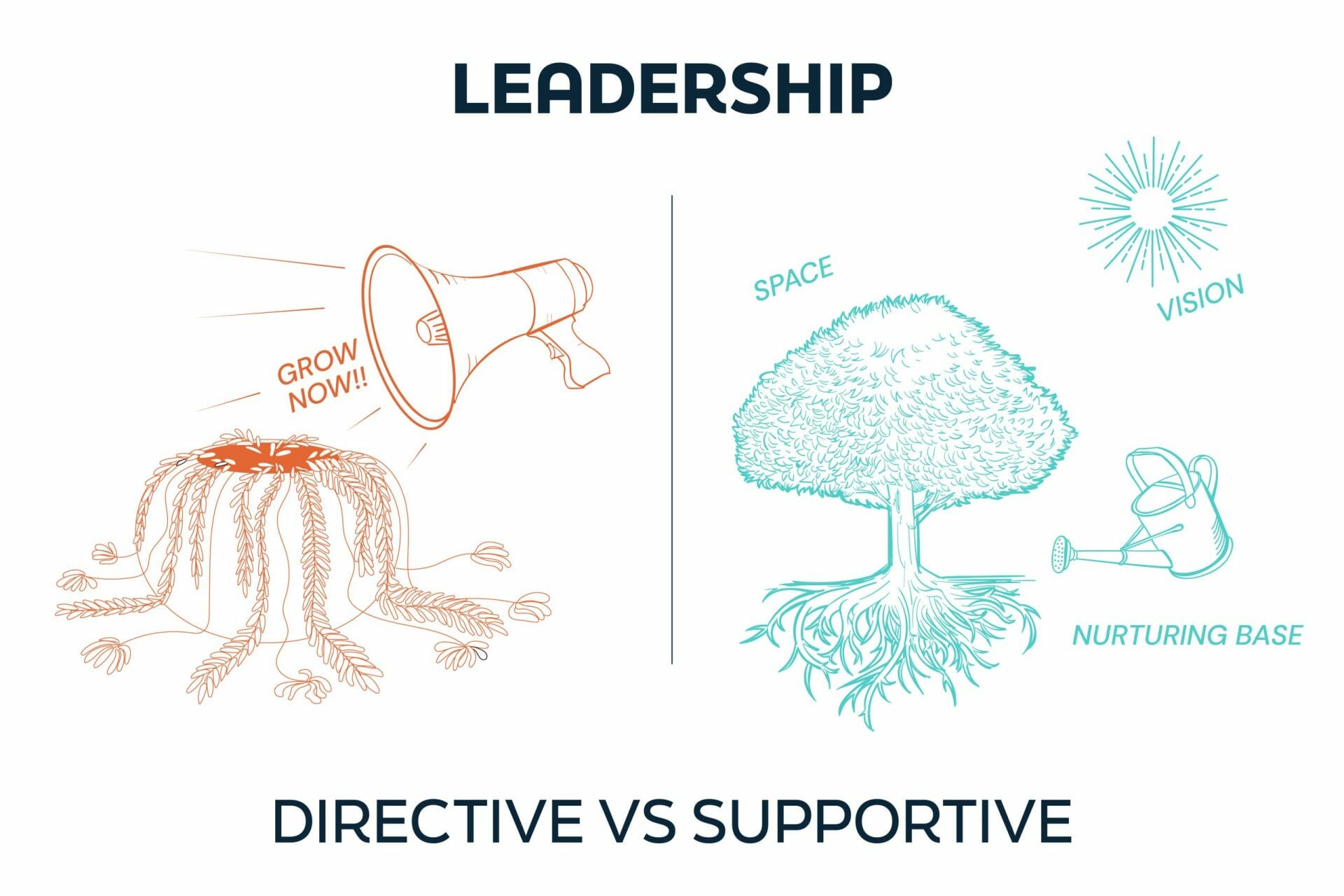
Smart Companies Are Looking Beyond EX Scores
Microsoft recently revised its approach to measuring how employees are faring. In a recent Harvard Business Review article, the company’s head of People analytics wrote, “Despite employee engagement scores that would seem to indicate that things were going well, it became clear that employees were struggling when we dived deeper into the responses.”
“We also sought to define a new, higher bar that went beyond engagement only,” she wrote. Today, Microsoft has broken-down employee fulfillment into five components and claims to have recalibrated listening systems to measure progress toward employees not feeling merely engaged – but feeling a sense of purpose.
Signals Suggest There is Work to be Done
Work Is Done by Teams – Not Individuals
In knowledge work, progress is made by teams – rather than individuals. Few challenges are sufficiently simple to be addressable by a single person or even function.
Instead, progress requires diverse skillsets to collaborate – driven by purpose and empowered by connection.
Team Productivity May Be In Decline
The way employees feel at work has an impact on productivity. An important piece of research by Michael Arena suggests social capital is eroding.
The research makes two major points using network data:
- Formal interactions (such as with functional teams) have remained in-tact; these represent 75-85% of our interactions and these have trended upwards
- Informal interactions (between functional teams or members) have reduced; these can be associated with random brainstorms or sidebar exchanges
Intentionality Trumps Proximity
The implication is that organizations may need to consider investing in intentionality – creating connections between workers. “An organization is likely to lose 50% of its innovation capacity,” the study concludes, “if it doesn’t rethink how to engage remote employees in informal interactions
Connections Between People Necessary for Connections Between Ideas
Team cohesion and effectiveness may become more important when teams are distributed.
Conventional thinking has emphasized the importance of managers in employee experience. But with distributed work – where each employee has fewer interactions with coworkers – there may be a rising role for colleagues.
Are You Going to Be Ready for Better Times?
Times Are Dark Now
Most surveys suggest the climate for growth will become more challenging in the coming months. In January the Conference Board 90%+ of CEOs expect a recession this year.
Recessions are generally associated with not only a decline in output but ensuing (or concomitant) job losses. Many experts asset the Federal Reserve will not be in a position to stop raising interest rates until labor markets capitulate – which will only happen with job loss.
But Things Will Get Better
In the United States, most economic slowdowns last a matter of months. Capital Group concludes recessions have persisted for an average of 10 months.
For those facing declining sales or business closures, that can feel like an eternity. But CEOs need to take a long-term view.
More important is to consider the magnitude of “bad times” versus that of “good times”. Capital Group further concluded that growth cycles lead to 25% rises in GDP while recessions average a decline of just 2.5%.
The implication is that recessions tend to be shallow and short – and precede boom cycles that are significant and long.
Do You Stick by Your Employees When Times Are Tough?
Many leaders are turning to the familiar recession playbook of belt-tightening.
The top target for cuts are discretionary programs – such as environmental sustainability initiatives or employee programs – which can provide temporary relief against some profit pressures.
CNBC reports 59% of executives planning to pause or reconsider spending, over 50% plan to fire employees.
Yet at the same time, 92% of the same CEOs believe their headcounts will expand over the next three years.
During the 2020 recession – which lasted less than one quarter – restaurants, airlines, and hospitality firms shed employees only to find they could not re-hire them at the same wages.
By one estimate, the leisure sector incurred a 12% rise in the cost of labor among workers fired and then rehired.
Preventing a Costly Retooling in 2024
Teamraderie developed a proprietary economic model to help customers evaluate how much to invest in employee experience today in order to avoid unwanted employee attrition.
Customers using Teamraderie – which builds connection and trust within workplaces – have measured:
- 30% reduction in unwanted attrition
- 20%+ lift in manager ratings
- 25%+ increase in reported feelings of trust between employees
Describe the Model
The Teamraderie ROI Calculator considers over 100 factors – including industry-level attrition rates and salaries, role-level productivity ramps, average cost-to-hire, time-t0-hire, and the cost of (dis)engagement.
The model lets CEOs understand the benefits of Teamraderie programs by looking at the impact on:
- Candidate Acquisition
- Onboarding
- Productivity
- Turnover
Impact on 250-Person Engineering Organization
The chart below shows the impact of Teamraderie programs on an org of 250 engineers. Due to the high cost of replacement and the long time to replace, Teamraderie programs can save $1.3M per year.
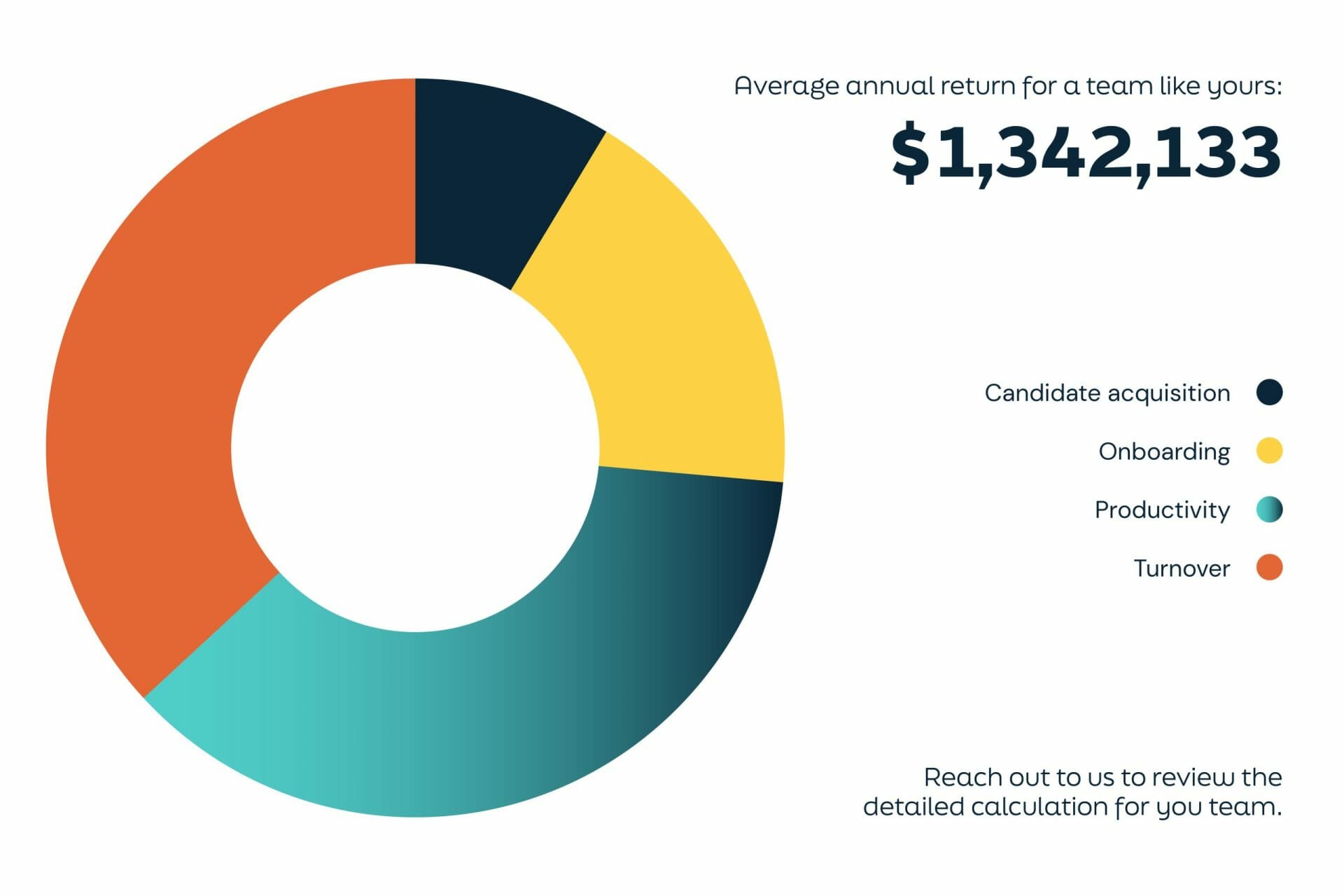
Impact on 10,000-Person Enterprise
Due to interaction effects and the codependency of knowledge work, impact is even greater for larger companies. A 10,000-person enterprise might gain $50M+ per year from a Teamraderie program that protects employee morale, productivity, and retention.
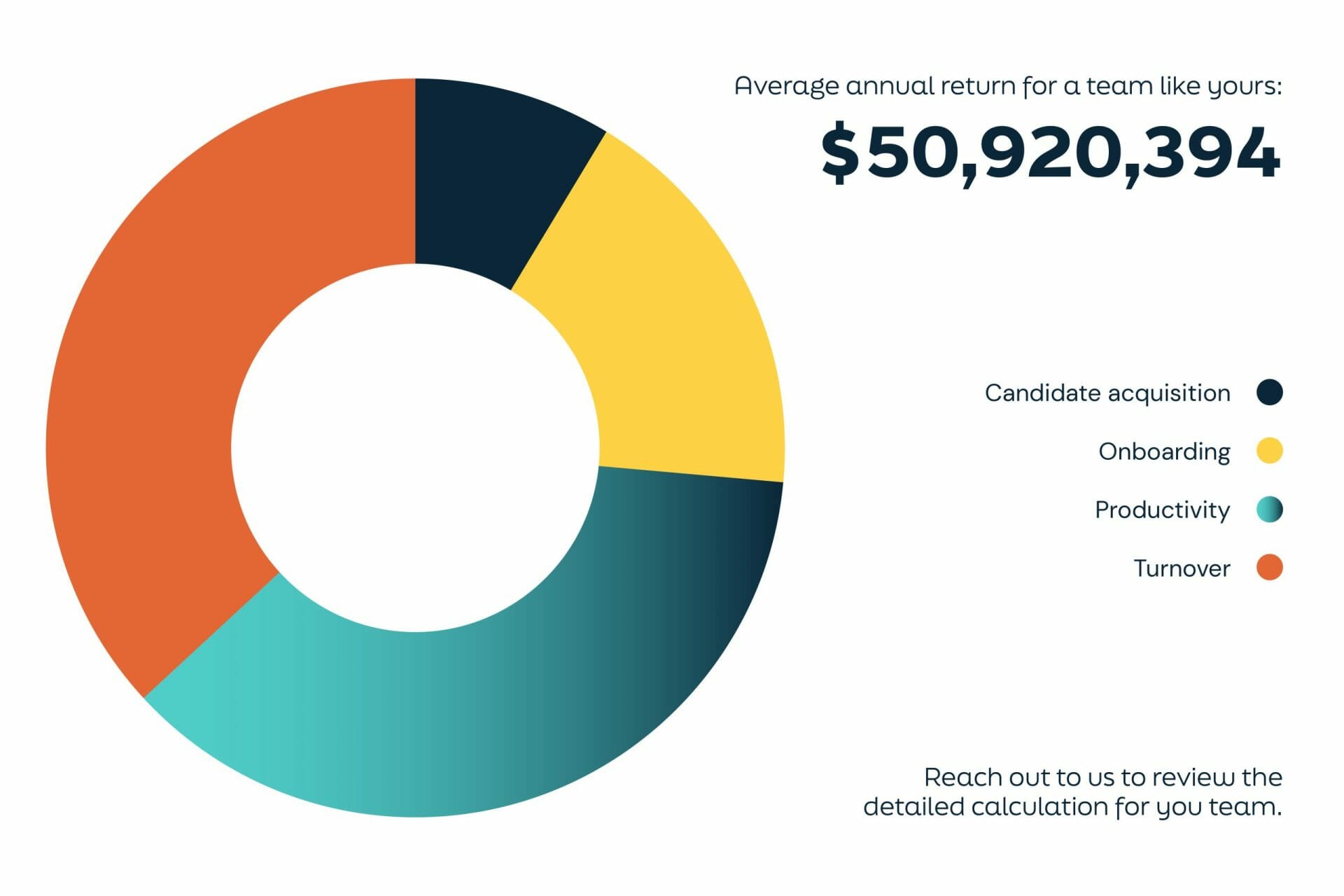
It’s Easy to Forecast “The Great Reinvestment of 2024”
It’s not hard to imagine what the end of 2023 or early 2024 might look like.
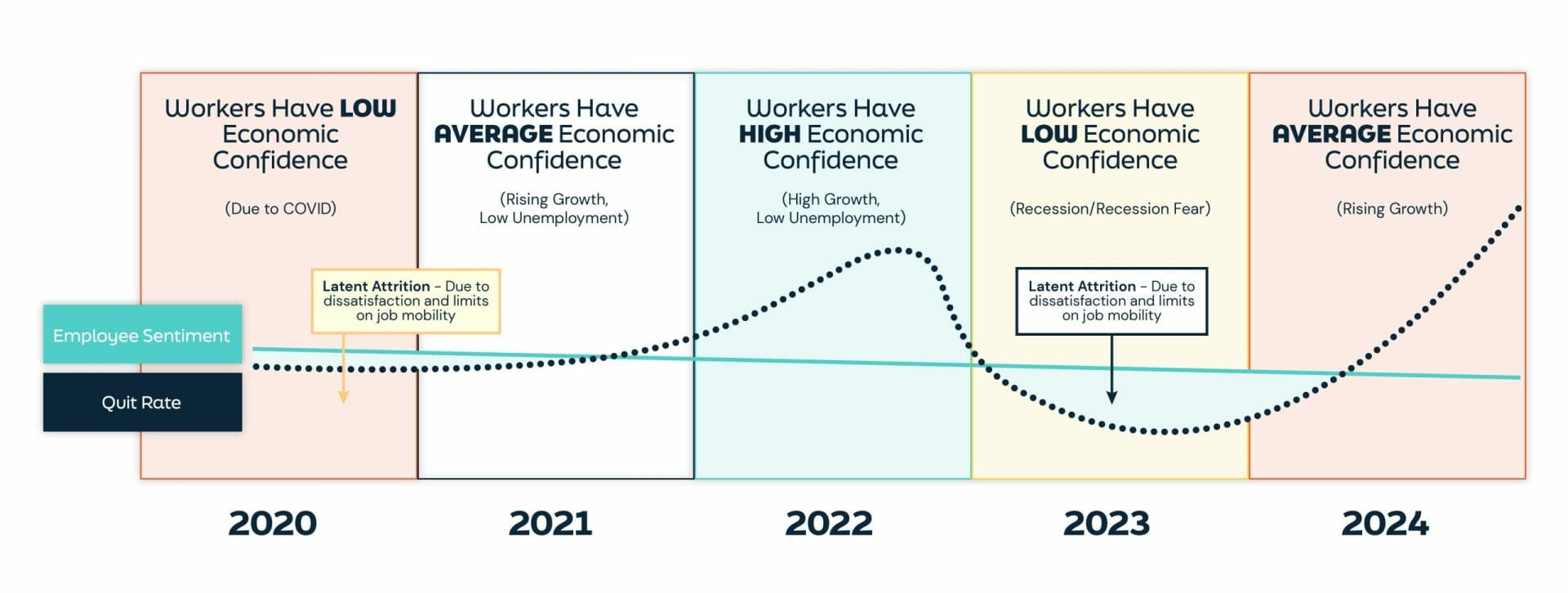
The U.S. economy – after suffering a mild recession that starts sometime in Q2’23 – begins to show signs of growth again. Employees place help wanted signs out again after a year that began with layoffs and retrenchment. And those who “hunkered down” to make it through a tough 2023 see greener pastures.
Some CHROs have estimated quit rates will not only rise to the levels seen during the “Great Resignation” – they may go higher after being held artificially low with economic uncertainty.
Helping You Protect What Matters Most
Teamraderie remains committed to helping its customers to put programs in place that build connected, committed, and productive workplaces. Along with our customers, we believe investing in cohesion is particularly important during challenging times – and that inspired employees are what will lead your company to emerge stronger from any upcoming recession.

